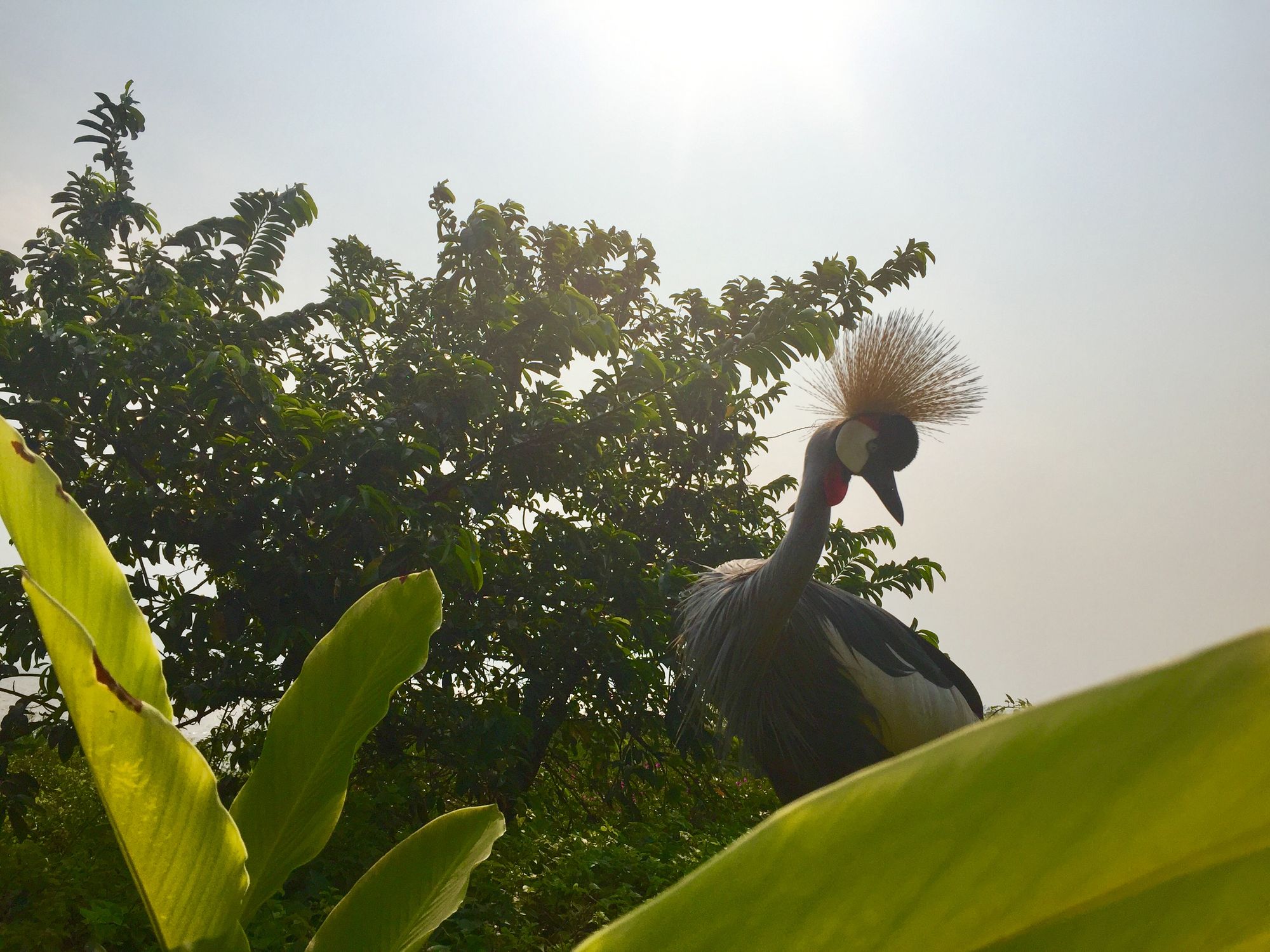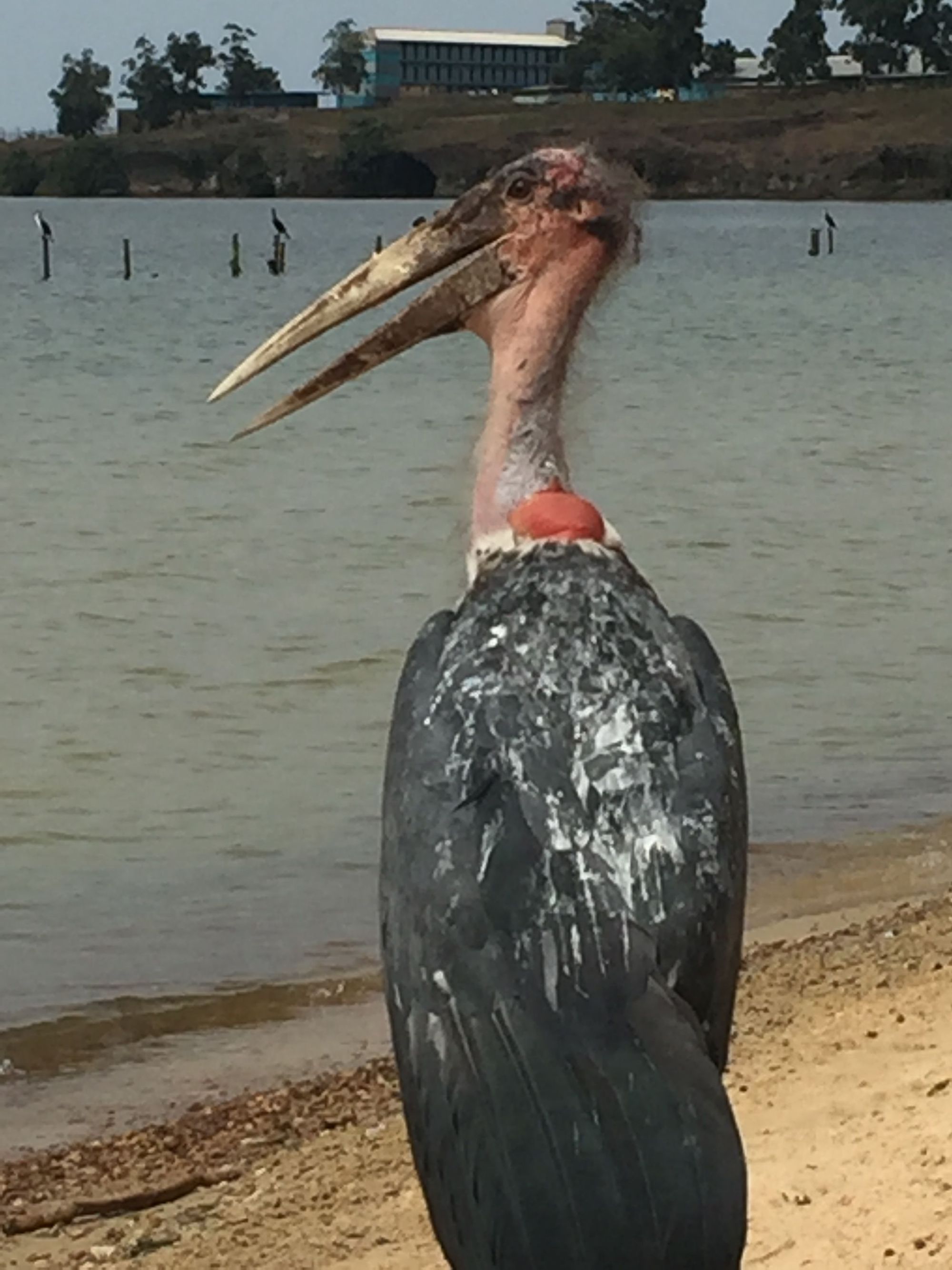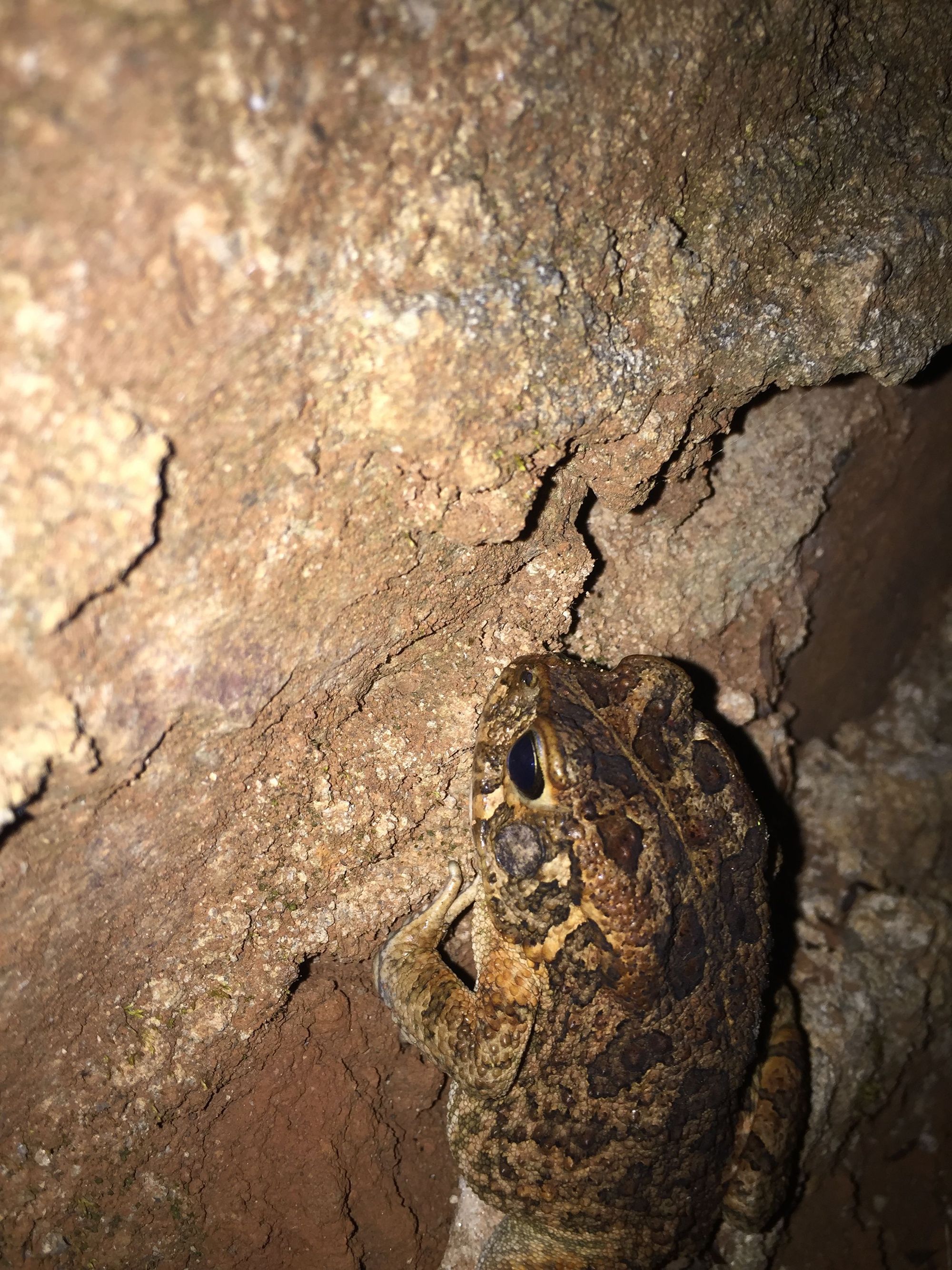The Ibis At Dusk
Originally written in 2018.
Oliver and I are in a valley in Gitega Province, Burundi, surrounded by fields. We're walking to visit some fish ponds we were told about. Valleys here have completely flat bottoms. The streams have been re-routed into channels, and an intricate series of dams funnels water into different canals that feed the fields.
A man shows us his fish pond. It's the middle of three, and his is perhaps the largest one. He is carefully adjusting the inflow with a plastic bottle fashioned into a sieve. I attempt to ask how big the fish are. He nods.
We pass a Hadada Ibis feeding, its long curved beak poking into the mud along a canal. Its piercing squawk fills the valley, but it continues feeding, absentmindedly talking to itself in shouts. From here, it looks like a large burlap-brown dull bird, long legs in the mud, long beak in the mud, feathers blending into the mud, yelling. It notices our stares and lifts off up the valley, showing off its brilliant green shoulders in the sunset. As it lands far in the top of the valley, we hear its protestations as clear as ever.
There are no large predators in Burundi, and perhaps no large wild mammals at all. We are told they were all shot in the last war. In their palpable absence, birds thrive.
An African Pied Wagtail sits in the path in front of us. These birds don't say much, but quietly hop along the ground in constant motion. They look like cartoon prisoners, in white and black stripes. Perhaps their constant wiggling is because they are always about to make a dash for it.
We head back across the hospital, towards the housing complex where we've been given an apartment for our stay. Large trees surround the houses, pines, locusts, eucalyptus, broadleaves, miombos. Caleb says the pines were introduced by the Belgians. The higher slopes of these wooded mountains are densely colonized. The sighing of the wind through their branches reminds me of the Ponderosas back home.

The trees near our apartment are filled with birds, making their presence known loudly. Each has an incredible song. There's a deep "dee-dwoip" which wakes us early, as if someone is blowing into a jug outside our window. A shrill "ke-ke-ke-ke-ke-ke" never ends during the day, its owner the smallest and dullest chatterbox. The tangle of voices changes and morphs after sunset, speaking less often but with more mystery. Most of the birds you see are silent, while the birds you hear are invisible.
Gerard shows us pictures of owl chicks he's found, recently fallen from their nest. One has died, but the other hisses at him from under a bush. The mother watches from a tree nearby.
The dirt here is a deep orange-red clay. Most everything is cultivated, but the margins grow short grasses that poke up between various basalts. I have been warned of bugs that crawl under your toenails, but everyone here, including myself, wears flip-flops. The soil smells sweet.
We don't see many pets here, dogs or cats. Napoleon has a dog, Simba, a tawny bitch with pointy ears. She looks like a cattle dog from back home. Friendly and quiet, she smells our weird western behinds with curiosity. Many of Napoleon's neighbors have pigs in their yards, with tall woven fences that are green and lush.
On our way to dinner, we see two hawks fighting over a carcass stuck in a tree fork high above. One hawk is eagerly ripping its meal, shaking the tree branch in his haste to gorge. The other hawk looks on, loudly complaining, while the carcass gives faint whimpers less and less frequently. Perhaps this is the end of the other owl chick.
Pied crows are everywhere, the insufferable pranksters of every gutter, tree, and trash pile. One in particular has earned notoriety for swallowing a pill bottle which has now grown out of its neck. Nobody knows how it's survived, but the bottle has been protruding haphazardly for over five years now, earning one crow instant fame and recognition by the humans.
In Bujumbura, two tame Grey Crowned Cranes stare blankly at flowers, picking daintily across a low wall on gangly legs. They stare out over Lake Tanganyika, their top-knots outlined against the bright fog. After a few turns on the wall, the taller bird gets bored and hops down to pirouette in the grass until suddenly sprinting across the lawn. It appears that the cranes take "living in the moment" quite seriously, aimlessly carousing without a care.
Later, in Uganda, we are visited by Marabou Storks while drinking coffee on the shore of Lake Victoria. The storks are silent, but their huge wings beat a drumroll announcing their arrival. These are the storks who went to seed, spending a little too much time in the sun, or perhaps had disastrous careers as pyrotechnicians. They seem to smile at their own joke, waiting for someone to catch the drift. After waiting in vain for me to chuckle, they swoop up into a tree to drop gifts on unsuspecting walkers.

On our way back from the village one night, Oliver fills me in on an english teacher's experience. While staying in a hut in Africa years ago, he was visited by strange sounds and voices. A skeptic, he investigated but could find no cause. The screams and shouts tormented him. I search Oliver's tone to find any hint of sarcasm. It's too dark to see if he's smirking, but I am not easily unsettled. Our conversation is abruptly interrupted by an incredible screeching howl from up ahead. It sounds vaguely like a child yelling or a woman screaming a long way off. My heart leaps up.
A few steps further, and we see a huge shape glide across the road. At least four feet wide, it floated in perfect silence, suspended as if weighing nothing. It floats into the trees to our left.
As we train our flashlights into the trees, we hear the screech again from our right. The flashlight darts back, to shimmer in the eyes of a moulting, screeching baby owl that sits a foot tall on the top of a wall. It hunches and yowls, annoyed by our light.
We find the mother in the tree across the road, and keep her in view as we walk past her to our apartment. She's huge, most likely a Verreaux Eagle Owl, four feet tall. She could easily knock us out. Her "ears" follow us down the road, and she hoots, pleasantly, as if to apologize for her screeching youngster.
A large brown toad crosses the road as we turn in. Perhaps he's using the opportunity to sneak past the owls, the nocturnal abazungu, and their flashlights.
